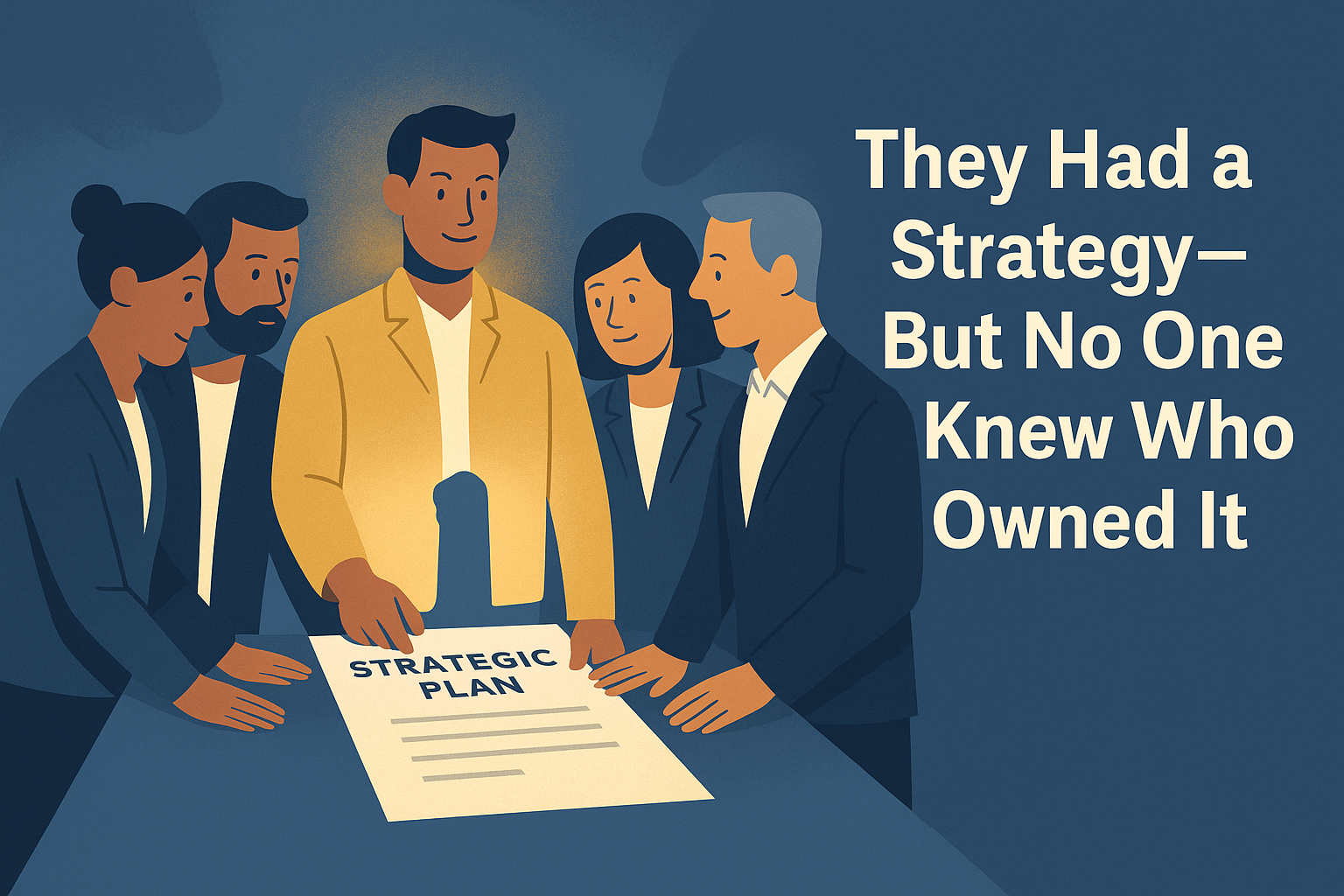


In Part 3, we tackled task-level accountability—how leaders assign the “A” and the “R” so that follow-through actually happens.
But this week, we’re zooming out.
Because even when tasks are owned, strategy can still stall if no one owns the outcome.
That’s exactly what happened with a leadership team we worked with recently.
Their growth plan looked great on paper:
New markets. New products. Revenue goals. A crisp slide deck.
But when we asked:
“Who owns this strategic priority?”
The answer was the same for everything:
“We all do.”
That’s not collaboration—that’s confusion.
And it’s why strategic initiatives stall before they even start.
The company had a solid growth strategy.
New markets. New products. A clear revenue goal.
But inside the leadership room, something wasn’t adding up.
Every time we asked:
“Who owns this?”
We got the same answer:
“Well, we all do.”
In collaborative cultures, it feels good to say,
“We’re in this together.”
But when everyone owns the goal, no one owns the outcome.
In this case, the consequences were obvious:
Deadlines were soft, because no one had the authority to push them
Decisions stalled, because no one was sure who the final call belonged to
Accountability got diffused into committees and check-ins
Progress reports became storytelling sessions—not execution updates
The leadership team wasn’t unmotivated.
They were just unclear.
We used Predictive Index and strategic facilitation to:
✅ Define the strategic pillars clearly
✅ Assign one owner per pillar — the accountable “A”
✅ Support the owner with a team of “R”s (the doers)
✅ Build a cadence for reporting progress without constant meetings
This wasn’t just a role change—it was a mindset shift.
Each strategic priority had a real owner—not a committee
Decisions sped up
Teams knew who to escalate to (and who not to)
Accountability became visible and executable
Strategy dies in shared ownership. It lives in clear ownership.
If your leadership team is “co-owning” everything, that’s not collaboration—it’s confusion.
We help teams assign ownership before the strategy breaks down.
Chris is a transformation leader with over 25 years of experience driving significant value and mitigating risks across a broad range of industries and functions. With a track record of generating more than $450 million in savings, he has excelled in both challenging and thriving environments within small businesses, mid-market firms, and Fortune 500 companies. A dual-degree graduate of Thunderbird and ESADE, Chris started his career at Arthur Andersen and progressed through roles from Corporate Audit to Global Human Resources at various Fortune 500 firms. He played a pivotal role in growing AArete, a global management consultancy, where he led initiatives that significantly reduced non-labor costs and improved compliance processes. An advocate for sustainable community initiatives, Chris was a founding member of a nonprofit focused on creating bicycle-friendly communities in New Jersey.